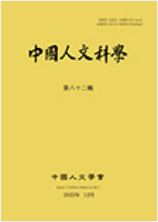《聊齋志異》는 문언문으로 쓰여졌지만 읽을 때 이해하기가 어렵지 않아 중국 전통문학사에서 고전소설의 정점으로 꼽힌다.작가 포송령은 작품속에 자신의 고향인 산둥(山東) 치천(淄川) 지역 일대의 방언도 교묘하게 삽입 시킨다. 방언은 특수한 언어 변체로 지역 특색의 언어적 표현 형태뿐만 아니라 사회성 등 언어적인 다른 특징까지 갖추고 있어 번역에 큰 도전이 되고 있다.이 글은 《요재지이》의 방언 관련 논문 성과 및 《山東方言研究》, 《淄川方言志》 등의 도서를 활용하여 《聊齋志異》의 산둥 방언 어휘를 정리하고, 汪宝荣(2016)이 제시한 네 가지 방언 번역법을 토대로 김혜경이 번역한 《聊齋志異》 완역본을 대상으로 그 중의 방언 어휘 번역법을 알아보고 분석하였다. 연구결론은 역자는 <요재지이> 내용 중에 방언을 번역할 때 명사적 방언에 대해 ‘방언대역법(方言對譯法)’과 ‘문학방언자창역법(文學方言自創譯法)’이라는 역법을 구사해 방언이 담당하는 사회적 기능이나 화용 기능을 전달한다. 동사적 방언을 번역할 때는‘방언표준화역법(方言標準化譯法)’이라는 역법을 구사해 표준어 목표어로 원어 방언을 해석한다. 또한 부사적 방언을 번역할 때는 절충적인 ‘방언특징약화역법(方言特徵淡化譯法)’이라는 역법을 택하는 경향이 있다. 본 논문이 중국 고전문학의 중한번역에 실천적인 의의를 가졌으면 한다.
Although Liaozhaizhiyi is written in classical Chinese, it does not make people feel obscure and difficult to understand. It is known as the “peak of classical classical Chinese short stories” in the history of Chinese traditional literature. The work also skillfully uses dialects, especially those in Pu Songling's hometown Zichuan, Shandong. As a special language variant, dialect is not only the specific manifestation of regional characteristics at the language level, but also has social and other language characteristics, which brings great challenges to translation. Based on the achievements of relevant papers on Liaozhaizhiyi dialect and reference books such as Shandong dialect research and Zichuan dialect chronicles, this paper extracts and counts the Shandong dialect vocabulary in Liaozhaizhiyi, and further uses the four dialect translation strategies summarized by Wang Baorong (2016) to explore the translation strategies of the extracted Shandong dialect vocabulary in the Korean translation of Jinhui Jing in Liaozhaizhiyi, This will have a certain reference significance for the translation strategy of dialect vocabulary and the selection of translation strategy of external translation of classics.
Ⅰ. 绪论
Ⅱ. 方言和方言翻译
Ⅲ. 《聊斋志异》中的山东方言词汇
Ⅳ. 《聊斋志异》韩译本中山东方言词汇的翻译策略
Ⅳ. 结论
參考文獻
(0)
(0)
